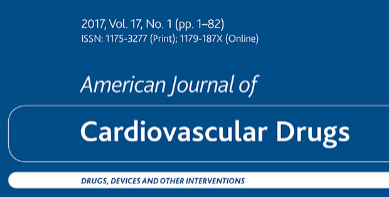Abstract and Introduction
Abstract
The use of chemotherapeutic agents is becoming more frequent as the proportion of new oncology patients increases worldwide, with prolonged survival after treatment. As one of the most popular chemotherapy drugs, doxorubicin plays a substantial role in the treatment of tumors. Unfortunately, the use of doxorubicin is associated with several adverse effects, particularly severe cardiotoxicity that can be life-threatening, which greatly limits its clinical use. For decades, scientists have tried to explore many cardioprotective agents and therapeutic approaches, but their efficacy remains controversial, and some drugs have even brought about significant adverse effects. The concrete molecular mechanism of doxorubicin-induced cardiotoxicity is still to be unraveled, yet endothelial damage is gradually being identified as an important mechanism triggering the development and progression of doxorubicin-induced cardiotoxicity. Endothelial-to-mesenchymal transition (EndMT), a fundamental process regulating morphogenesis in multicellular organisms, is recognized to be associated with endothelial damage repair and acts as an important factor in the progression of cardiovascular diseases, tumors, and rheumatic immune diseases. Mounting evidence suggests that endothelial–mesenchymal transition may play a non-negligible role in doxorubicin-induced cardiotoxicity. In this paper, we reviewed the molecular mechanisms and signaling pathways of EndMT and outlined the molecular mechanisms of doxorubicin-induced cardiotoxicity and the current therapeutic advances. Furthermore, we summarized the basic principles of doxorubicin-induced endothelial–mesenchymal transition that lead to endothelial dysfunction and cardiotoxicity, aiming to provide suggestions or new ideas for the prevention and treatment of doxorubicin-induced endothelial and cardiac injury.
Introduction
Cardiovascular diseases and tumors are the primary causes of morbidity and mortality worldwide and researchers have found that in 2020 there were about 19.3 million new cancer cases and nearly 10 million cancer-related deaths globally.[1,2] Doxorubicin, discovered in the 1960s, is an anthracycline-based broad-spectrum cytotoxic drug that dramatically enhances the survival rate of people with cancer.[3,4] It has been used widely in the chemotherapy of solid tumors such as ovarian cancer, breast cancer, brain cancer, gastrointestinal tumors, and hematologic tumors since 1963.[5] It is among the most effective cancer chemotherapy drugs, but severe cardiotoxicity and even life-threatening effects in about 25% of patients have restricted its further utilization.[6,7] Some studies have been conducted on the underlying mechanisms of doxorubicin-induced cardiotoxicity, but mostly on contractile impairment due to cardiomyocyte injury.[8] However, the latest research has identified endothelial damage as a possible novel target for doxorubicin-induced cardiotoxicity and is now a major focus of research.[9–12] Although the US FDA has approved the marketing of dexrazoxane, an effective medicine against the cardiotoxicity of chemotherapy, its efficacy and potential adverse effects do not fully meet the demand for clinical therapy.[13,14] Hence, while identifying the mechanisms and cytokines responsible for doxorubicin-induced cardiotoxicity, it is of great significance to seek therapeutic approaches to alleviate their cardiotoxicity in oncology patients.[15,16]
Endothelial-to-mesenchymal transition (EndMT), a unique form of epithelial-mesenchymal transition, is the process by which endothelial cells are converted into mesenchymal cells. It is also regarded as an intermediate state of vascular fibrosis, the process of cellular reprogramming.[17,18] First identified as a physiological mechanism involved in embryonic heart development and intima formation, EndMT plays an important role in embryonic development.[19] As a result of EndMT, endothelial cell properties are lost and the cells acquire the characteristics of interstitial cells such as fibroblasts and smooth muscle cells. In terms of biomarkers, the expression of endothelial markers such as platelet endothelial cell adhesion molecule-1 (CD31) and VE-cadherin was decreased, while the expression of fibroblast markers such as α- smooth muscle actin (α-SMA), vimentin, and fibronectin were increased.[20,21] As indicated by the morphology, the cellular gap increased, intercellular connections were loose, migration abilities improved, and the transformation from cobblestone monolayers to elongated and disordered fibroblast-like cells was the main characteristic.[22–24] Physiological EndMT is an essential process involved in embryonic development, but abnormal EndMT has been shown to be associated with many pathological conditions. The involvement of EndMT can be seen in a diverse range of diseases such as cardiovascular diseases, tumors, and rheumatoid immune systemic diseases.[25–30]
In recent years, endothelial damage caused by EndMT has gradually been discovered to be involved in doxorubicin-induced cardiotoxicity as studies have advanced. Therefore, based on the available evidence, we explored the molecular mechanisms and signaling pathways of EndMT and outlined the molecular mechanisms of doxorubicin cardiotoxicity and the relationship between EndMT and cardiotoxicity. Collectively, this evidence suggests that EndMT may be a potential target for the treatment of doxorubicin-induced cardiotoxicity.
Am J Cardiovasc Drugs. 2023;23(3):231-246. © 2023 Adis Springer International Publishing AG












